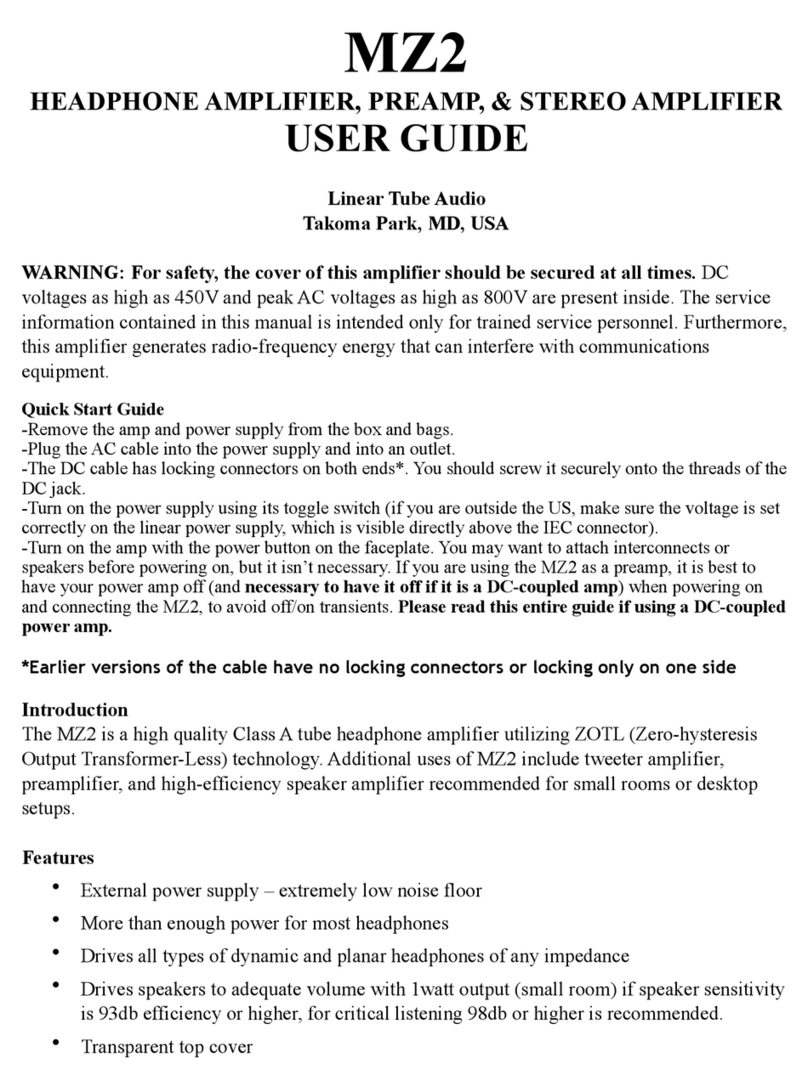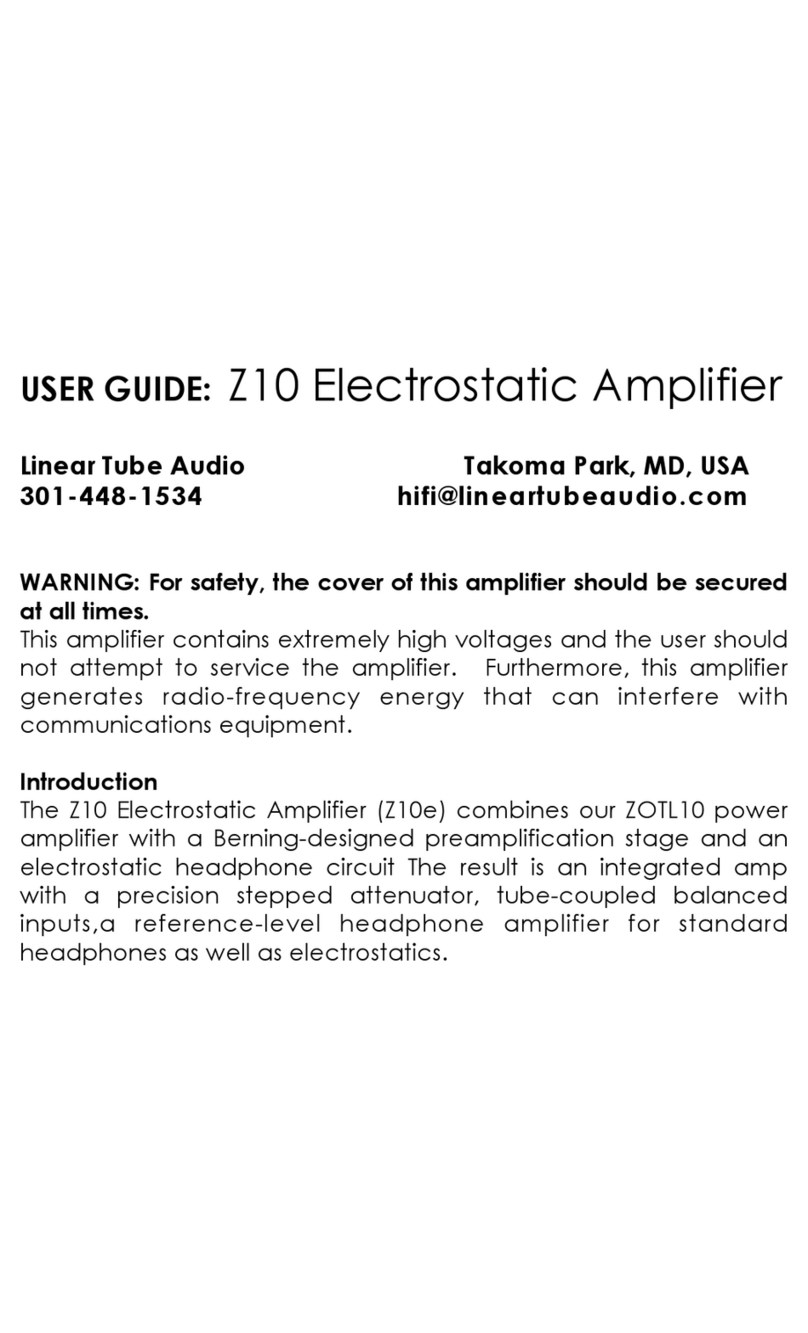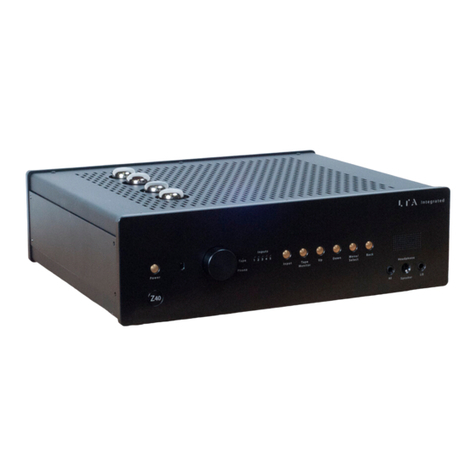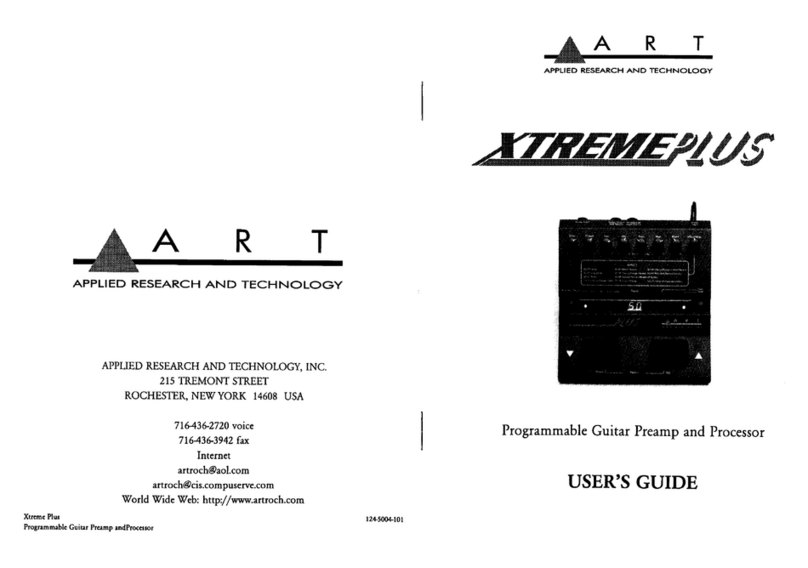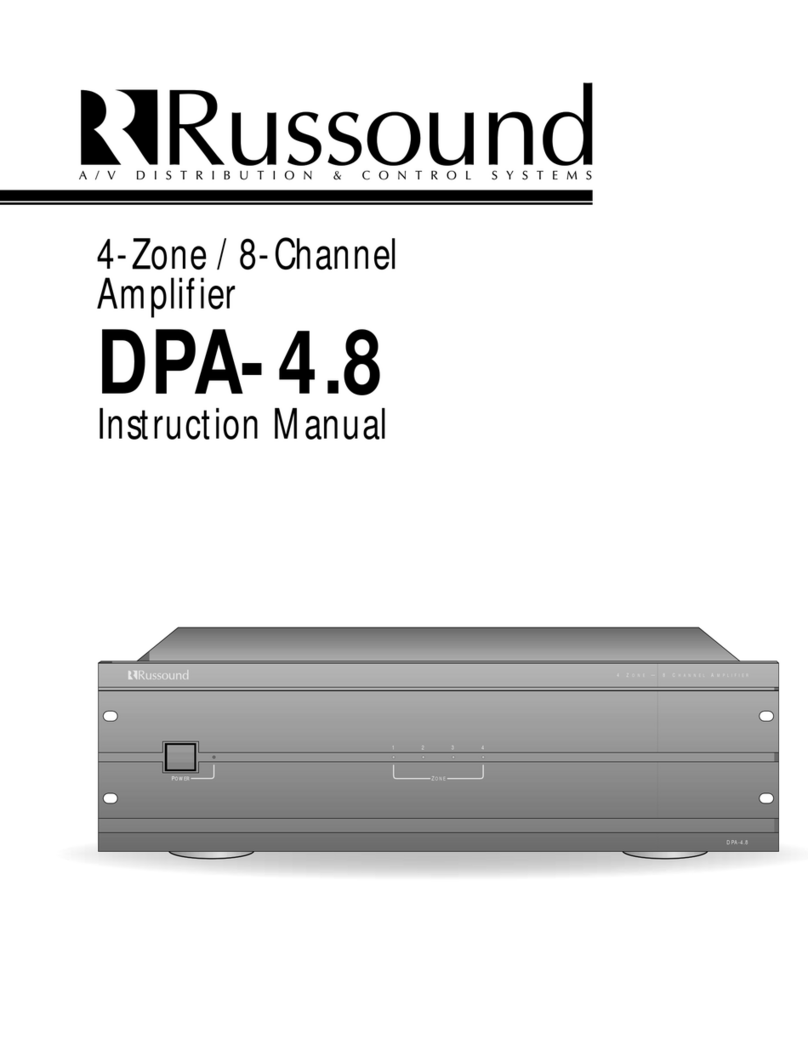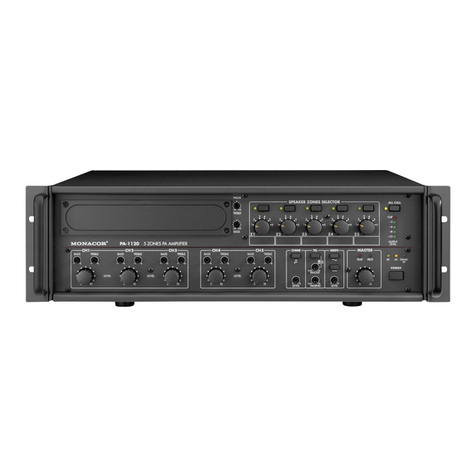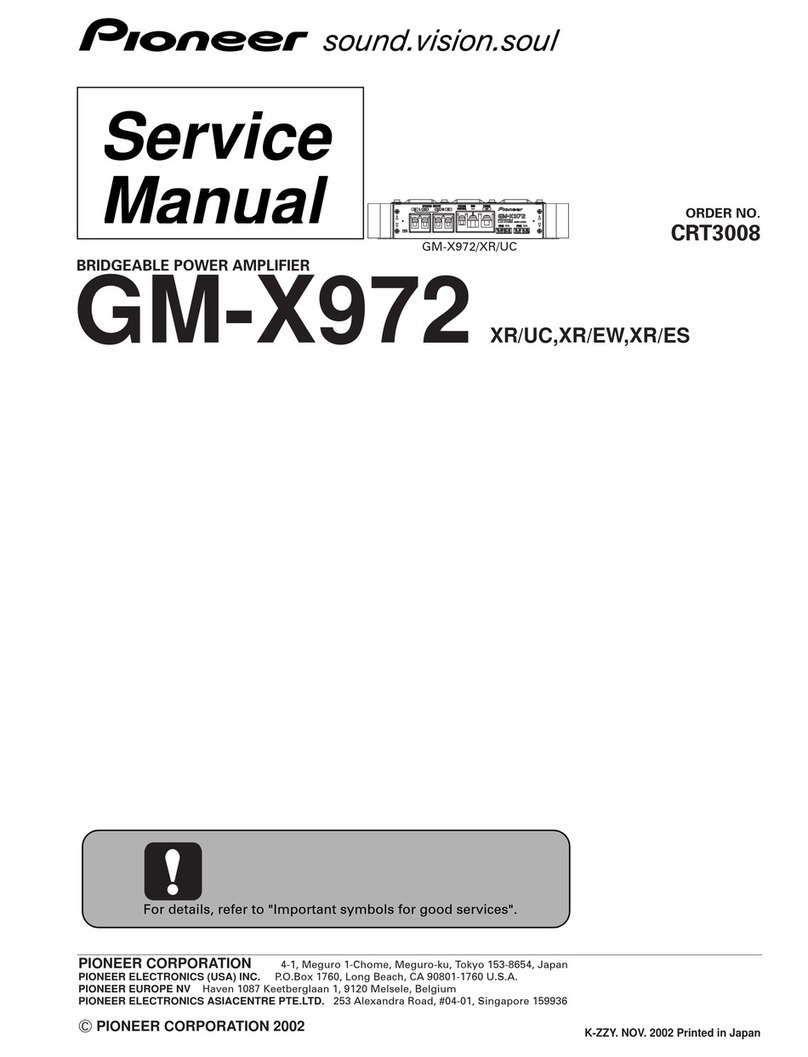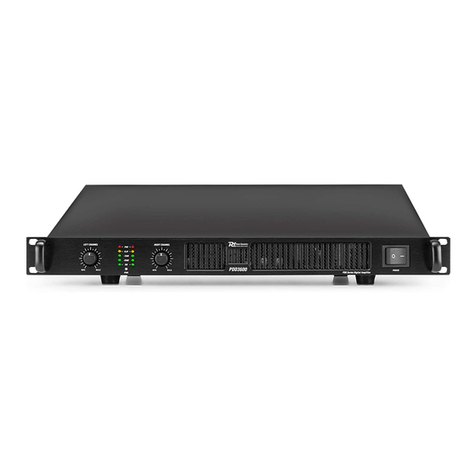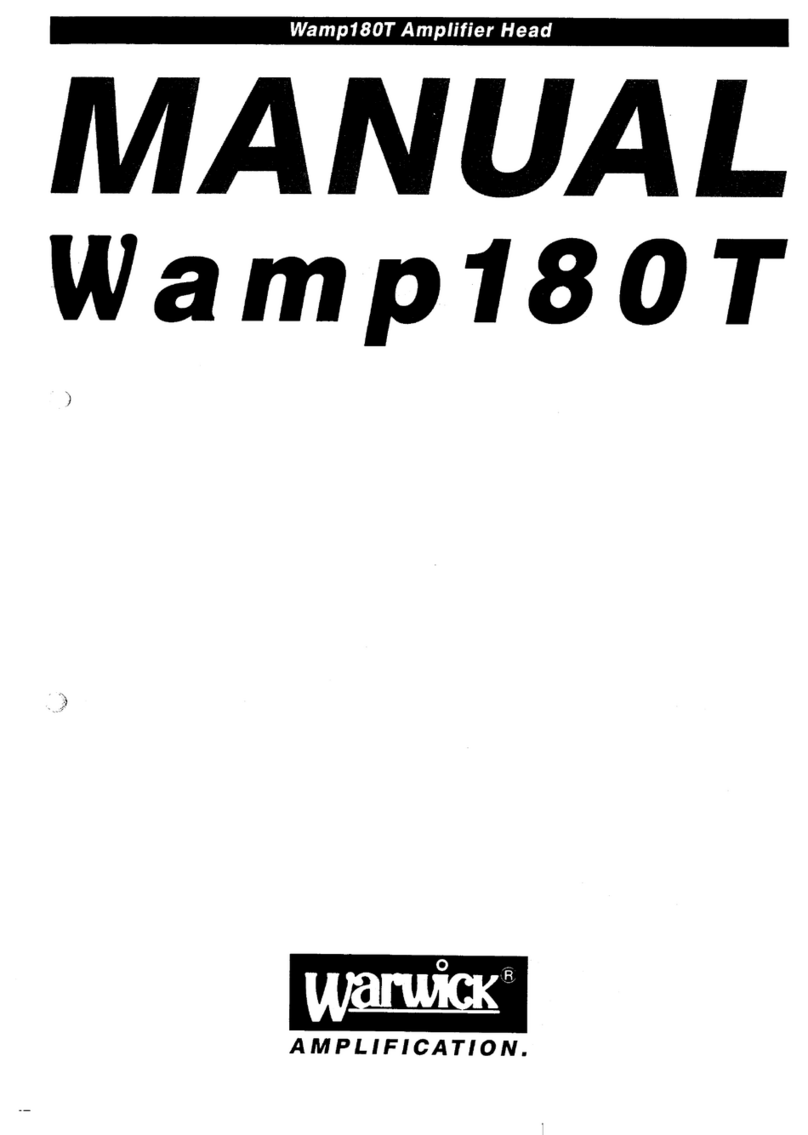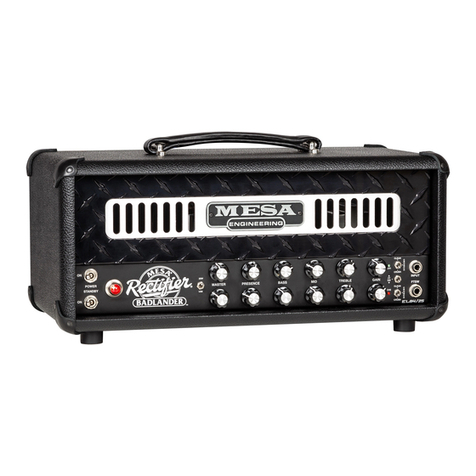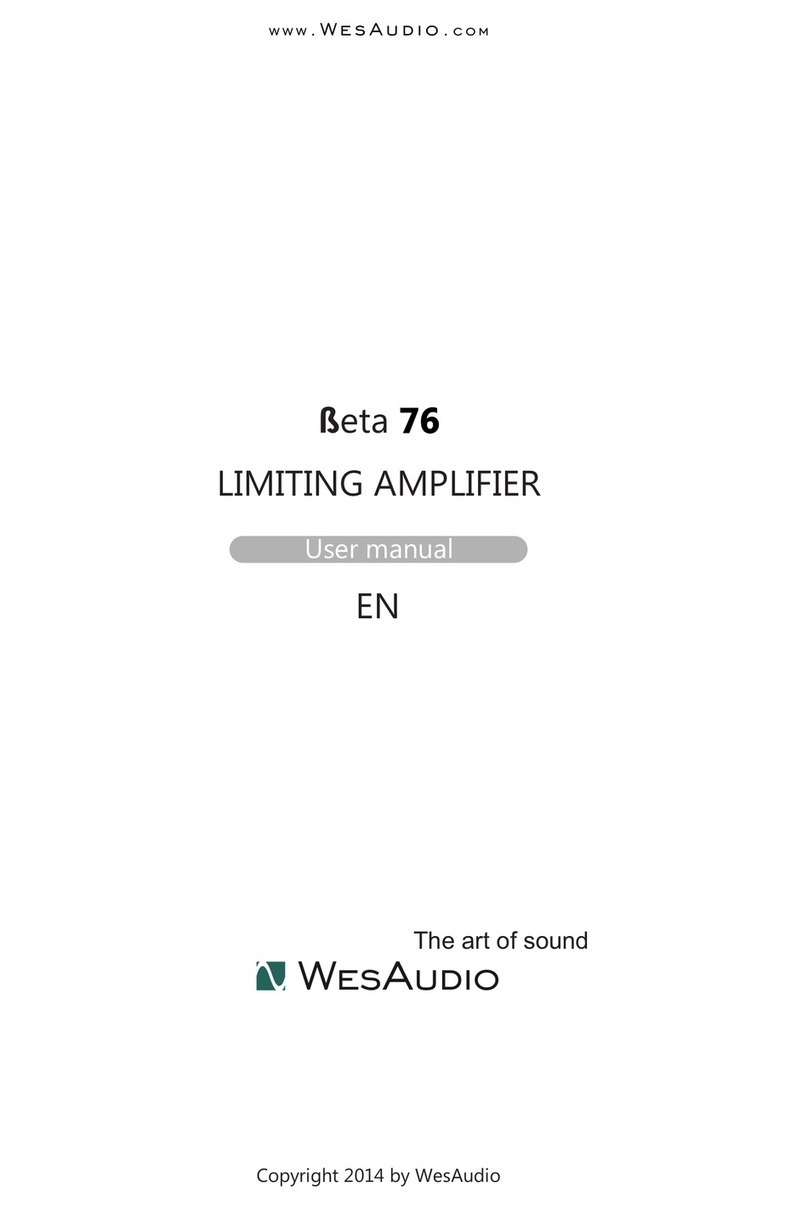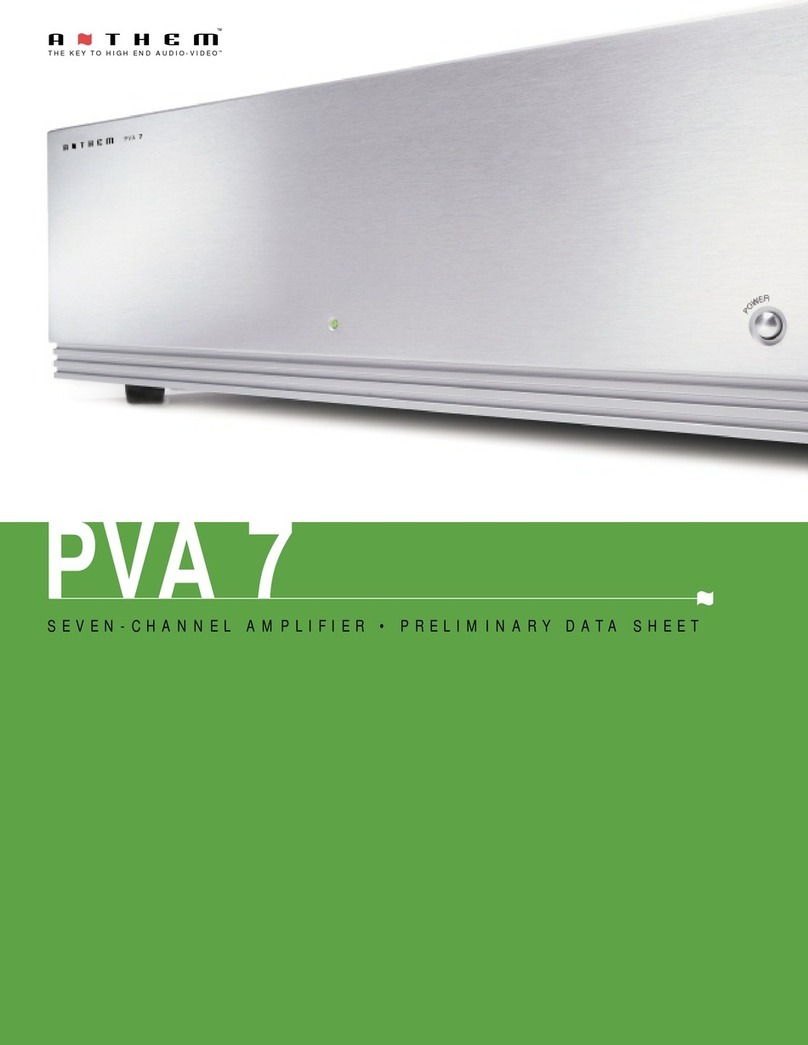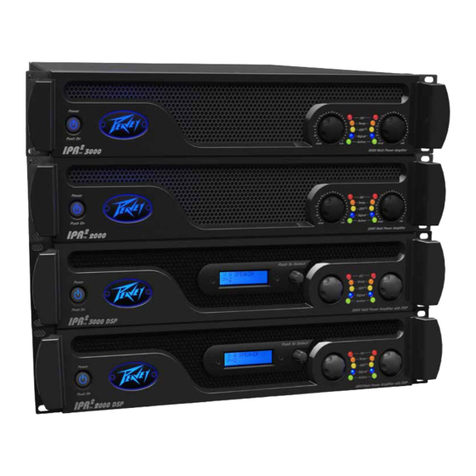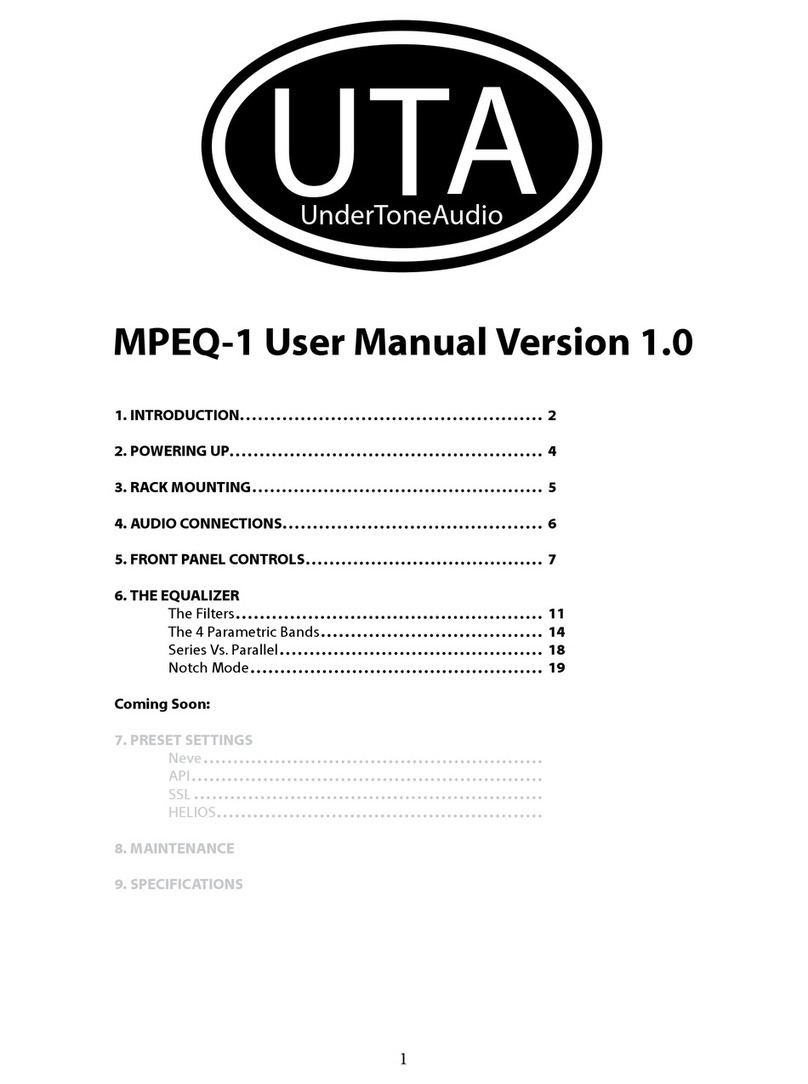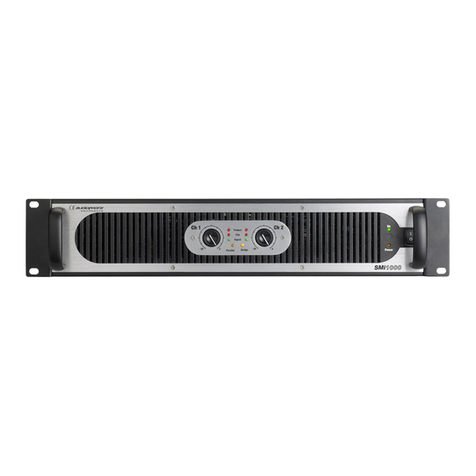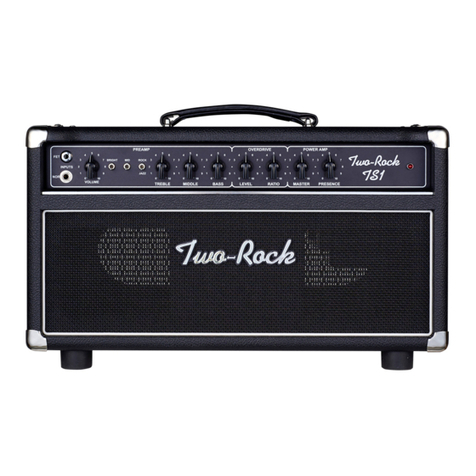Linear Tube Audio microZOTL User manual

USER GUIDE: microZOTL Preamplifier
Linear Tube Audio Takoma Park, MD, USA
WARNING: For safety, the cover of this amplifier should be secured
at all times.
This amplifier contains extremely high voltages and the user should
not attempt to service the amplifier. Furthermore, this amplifier
generates radio-frequency energy that can interfere with
communications equipment.
Introduction
The microZOTL Preamplifier is a Class A tube preamplifier and
headphone amplifier utilizing ZOTL (Zero-hysteresis Output
Transformer-Less) technology. After years of refining and testing,
LTA has created the microZOTL Preamplifier. This is the highest
expression of the microZOTL circuit as both preamp and
headphone amp in a rack-friendly form factor.

Limited Two-Year Warranty*
1. Your new product is covered by a limited two-year warranty
against defects in material and workmanship. Any repairs
required will be made at no charge within the first two years after
purchase as a new unit.
2. Any units returned for warranty repair must be shipped prepaid
after receiving return authorization. If possible, the unit should be
shipped in its original packaging. If this is not possible, the unit
should be well packed with particular attention paid to protection
of all corners and avoidance of any looseness in the carton.
3. This warranty does not apply to damage resulting from physical
abuse or unauthorized alterations or repairs, or from tube rolling or
adapter use, or from the use of third-party components, or
damage to exterior finish resulting from careless use.
4. The warranty is void if the serial number has been removed,
altered, or defaced.
5. This warranty is void if improper voltage is applied to any input or
output.
6. If Linear Tube Audio determines after receiving the unit that
damage was misrepresented and has been caused by something
not covered by the warranty, the customer must pay for any
necessary repairs before the unit is returned to the customer.
7. Linear Tube Audio reserves the right to improve or change its
products without obligation to modify previously manufactured
units.
* Applicable for domestic sales only. There is a one year warranty
for overseas customers. Handling and shipping costs are the
responsibility of the overseas customer.
Service Note
ZOTL amplifiers use a unique circuit and even trained technicians
familiar with tube amplifiers may not know how to correctly work
on LTA products. Please contact us before attempting any
alteration or repair, whether you are concerned about the
warranty or not.!

Specifications
Circuit Type: Push-Pull Class A
Power Output: 1W (4 Ohm), 0.5W (8 Ohm)
Input Sensitivity: 0.6V RMS for full output
Input Impedance: 50K
Headphone Output impedance: 2 Ohms
Preamp Output Impedance: 50 Ohms
Gain: 10.3dB (4 Ohm load)
12.4dB (8 Ohm load)"
Noise: -90dB
Frequency Response: +/- 1dB, 10Hz-20kHz (4 Ohm Load)
+/- 1dB, 5Hz-50kHz (8 Ohm Load)
THD: 1%
Power consumption: 33W"
Input Voltage with SMPS: Universal
Input Voltage with LPS+: 110/220 Selectable; 100V available
Tube Complement: (2x) 12AT7, (2x) 6SN7/12SN7
Size: W: 17” (43.2cm), H: 4.2: (10.7cm), D: 12.4” (31.5cm)
Weight: 14 lbs (6.35 kg)
Shipping Weight: 22 lbs (10kg)

Quick Start
Remove preamplifier from the box.
Attach the power cable to the IEC connector and plug into an
outlet. Turn the power switch next to the IEC connector on. This will
not turn the preamplifier on (unless you have Power-on Override
turned on, which you can do in the menu).
Hook up your sources as well as your power amp.
Once your system is set up and everything is hooked up, turn on
your preamplifier via the power button on the front panel. The
buttons are capacitive, so you only need to touch them, they do
not push in.
There is a turn-on delay of several seconds to allow the unit to
warm up.
Operation
The unit is designed to be powered on indefinitely without harm.
The front panel power button powers down the amplifier but the
power supply remains on in a nearly idle state. To turn the amp
completely off, use the power switch next to the IEC connector.
While it does not generate much heat, the unit is air cooled and
should be placed somewhere with adequate ventilation.


The front of the preamplifier has the power button, headphone
jack, IR sensor, volume knob, input status LEDs, tape monitor LED,
input selection button, tape monitor button, menu navigation
buttons, and the display.
The back of the preamplifier features the IEC connector, power
switch, two sets of RCA outputs, tape in, tape out, four sets of RCA
inputs, and one set of XLR inputs.
Inputs
There are five total inputs: four RCA and one XLR. The XLR provides
an optional transformer-coupled balanced input. Using an input
transformer, the balanced input signal experiences no voltage loss
and maintains its high noise rejection as it is converted into a
single-ended signal.
If you choose not to get the transformer option, the XLRs are wired
as single-ended inputs, with the negative signal voltage tied to
ground. Though there is voltage loss, using the XLR inputs with a
balanced source may sound better than using the single-ended
output from that same source; it would be equivalent to using an
XLR > RCA cable.
Outputs
The two preamplifier outputs are paralleled and will put out the
same amount of power. If you are using both outputs at the same
time, the output voltage of the preamplifier will be shared.
The headphone output is a 1/4” jack. When a headphone plug is
inserted, the preamplifier inputs are muted.
!
Tape Monitor
The Tape Output always functions as an unattenuated output
directly from the selected input. When Tape Monitor is selected via
the button on the front panel, the microZOTL Preamplifier outputs
the signal from the Tape Input, while still sending the selected, non-
Tape input to the Tape Output. !

User Interface and Controls
The front panel features a power switch, input switch, volume
knob, and display. The remote control is able to adjust volume,
mute, and access a menu with more configurable options.
Remote Control
Up and Down Buttons: Volume Up and Volume Down. They can
be held down or used in a single step mode. In Menu mode, they
scroll up and down.
Left and Right Buttons: Unused unless activated in the menu to
function as Balance control or input selectors. In the Menu, they
act as selectors.
Center Button: Mute. When the unit is muted, there are two Xs on
the display. When in Menu, it acts as a Select button.
Menu Button: Enters Menu Mode. In the menu, this functions as a
Select button.
Play/Pause Button: Toggle inputs. [When held down for 30 seconds,
it will pair an Apple remote to the unit. Pairing confirmation
appears on the display when this is successful.]

Menu
The menu is accessed via the Menu button on the remote control.
Scroll with the up and down buttons to see menu options. Pause
on an option to see the entire title scroll by.
Balance: Use the right and left remote buttons to adjust the
balance. The front panel displays the balance setting as you
adjust - two bars in the center indicate that the balance is at 0
(both channels are equal). When the desired balance level is
selected, press the center button to save the setting. A message
will appear on the display to indicate which setting the balance
has been set to. The balance setting is saved across all inputs and
will be utilized upon power up to the last saved setting. The
maximum balance setting is 16 levels difference.
Brightness: The front panel display can be set to 16 levels of
brightness. The brightness levels are saved and recalled upon
power on.
Home Theater Input: Home Theater Input locks a selected input at
a fixed volume level to allow external volume control. Select the
input desired to have a fixed volume. This setting is saved and the
selected input will henceforth be locked at that volume level until
the Home Theater mode is removed from that input.
Display Timeout: The volume display and input LEDs can be set to
turn off after 10 seconds. They will reappear if a button on the
remote control is pressed or the volume knob or front panel switch
is changed. There are 3 settings:
OFF - The volume display and input LEDs remain on.
VOL - The volume display turns off but the input LEDs remain on.
ALL - The volume display and input LEDs turn off.
L-R Remote Arrows: There are two functions that can be selected
for the Left-Right Arrow buttons as follows:
Off – the remote Left-Right arrow buttons are deactivated.
BAL – the remote Left-Right arrow buttons will control the balance.
Inp – the remote Left-Right arrow buttons will select the input.

Power-On Override: When activated, the unit powers on when the
AC power is turned on without needing push the front panel
power button.
Reset to Default: The amplifier controls are set to Balance = 0,
Display Timeout = Off, Home Theater Mode = None, and Display
Brightness = 8, and Remote Left-Right Arrow buttons set to Not
Active.
Tube Heater Voltage Jumper Settings
The microZOTL Preamplifier
comes with selected old-stock
12SN7 tubes as its standard
output tubes. By changing the
jumpers on the circuit board,
the amp can also use 6SN7
tubes. These are identical
sonically, they simply use
different voltages for the
heater. When switching from
one to the other, be sure to set
the jumpers on the boards to
the correct position. A 6-volt
tube like the 6SN7 will burn out
quickly if given 12 volts.
On the circuit board, there are
two headers next to each other,
for a total of 4 pins. There is a small diagram showing the correct
way to orient the jumpers. When using only a single jumper in 6V
operation, there is a header labeled “park” where you can store
the extra jumper.
To use 6SN7s, set the jumpers to 6V by placing a single jumper
across the center two pins. To use 12SN7s, set the jumpers to 12V
by using two jumpers, covering all 4 pins.

Tube Replacement/Rolling: The amplifier operates the tubes in a
manner that maximize tube life and the tubes are expected to last
over 10 years of regular use. The sockets are tight, so gently rock
the tube pins until you are able to remove the tubes. We use high-
quality ceramic tube sockets with gold pins which are designed in
such a way that the white ceramic part may shift slightly. This is an
intentional design; the tube socket is very secure.
We have heard no reports of any trouble using equivalents of
6SN7, 12SN7, or 12AT7 tubes. For lower gain and a more laid-back
sound, you can substitute 12AU7 tubes for the 12AT7s. Do not use
12AX7s. When replacing the tubes, use matched pairs.
Fuses: The microZOTL Preamplifier has a fuse on the audio board
and two fuses in the LPS+. All are 5x20mm. There is a 2.5A Fast Blow
fuse on the audio board and there are two 4A Slow Blow fuses in
the IEC inlet of the Power Supply.
For more information and FAQs, please visit
www.lineartubeaudio.com or contact us at

NOTES

Other Linear Tube Audio Amplifier manuals
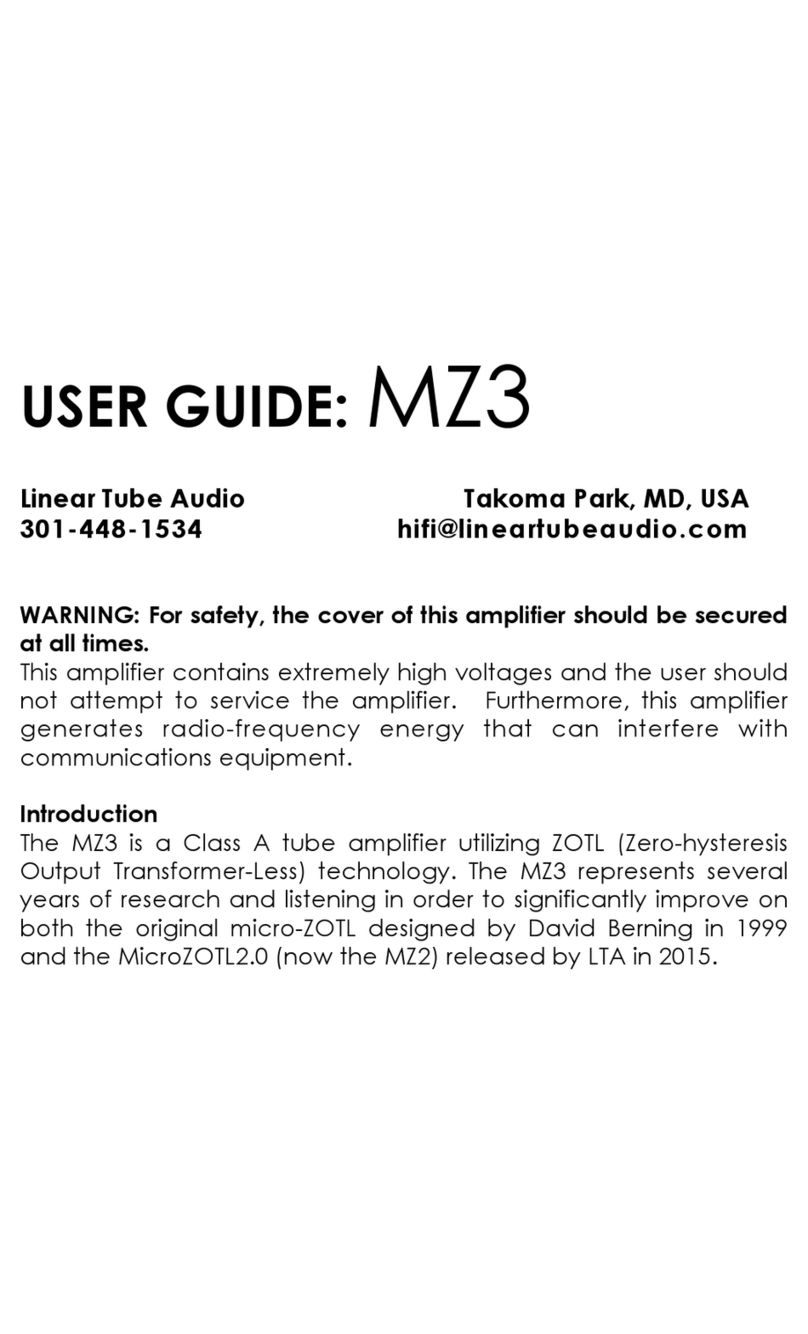
Linear Tube Audio
Linear Tube Audio MZ3 User manual
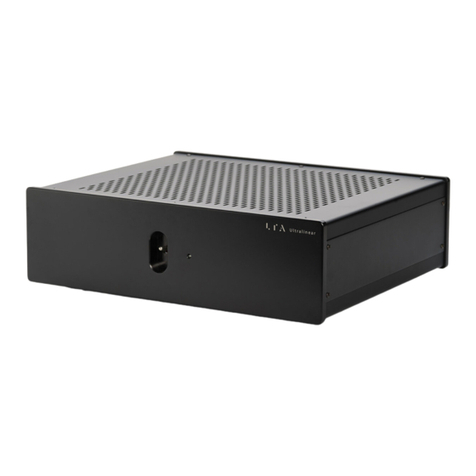
Linear Tube Audio
Linear Tube Audio ZOTL ULTRALINEAR User manual
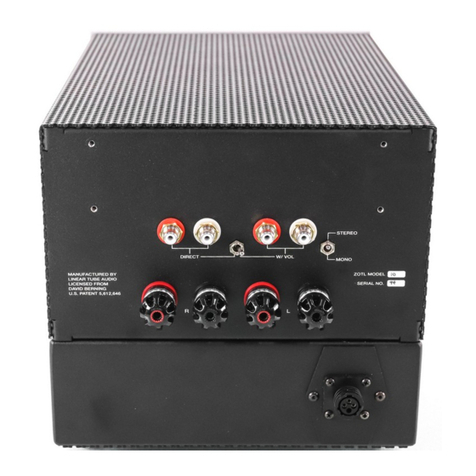
Linear Tube Audio
Linear Tube Audio ZOTL10 Mk.II User manual
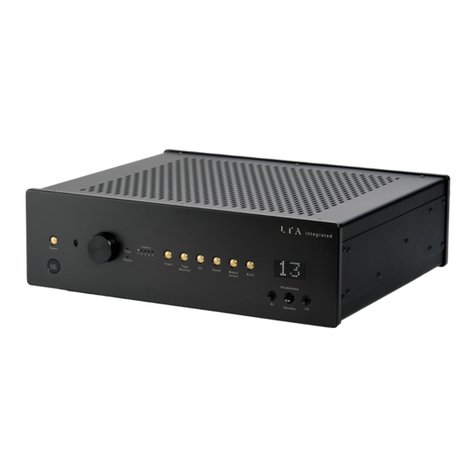
Linear Tube Audio
Linear Tube Audio UL+ User manual

Linear Tube Audio
Linear Tube Audio ZOTL10 User manual
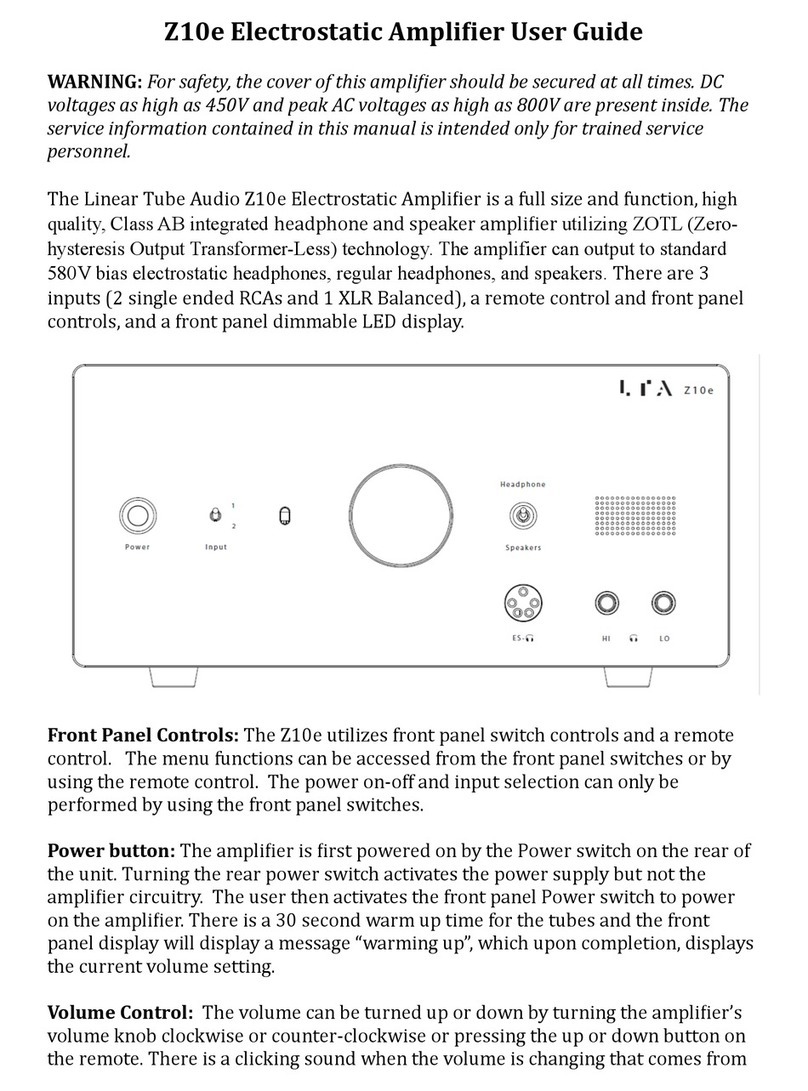
Linear Tube Audio
Linear Tube Audio Z10e User manual
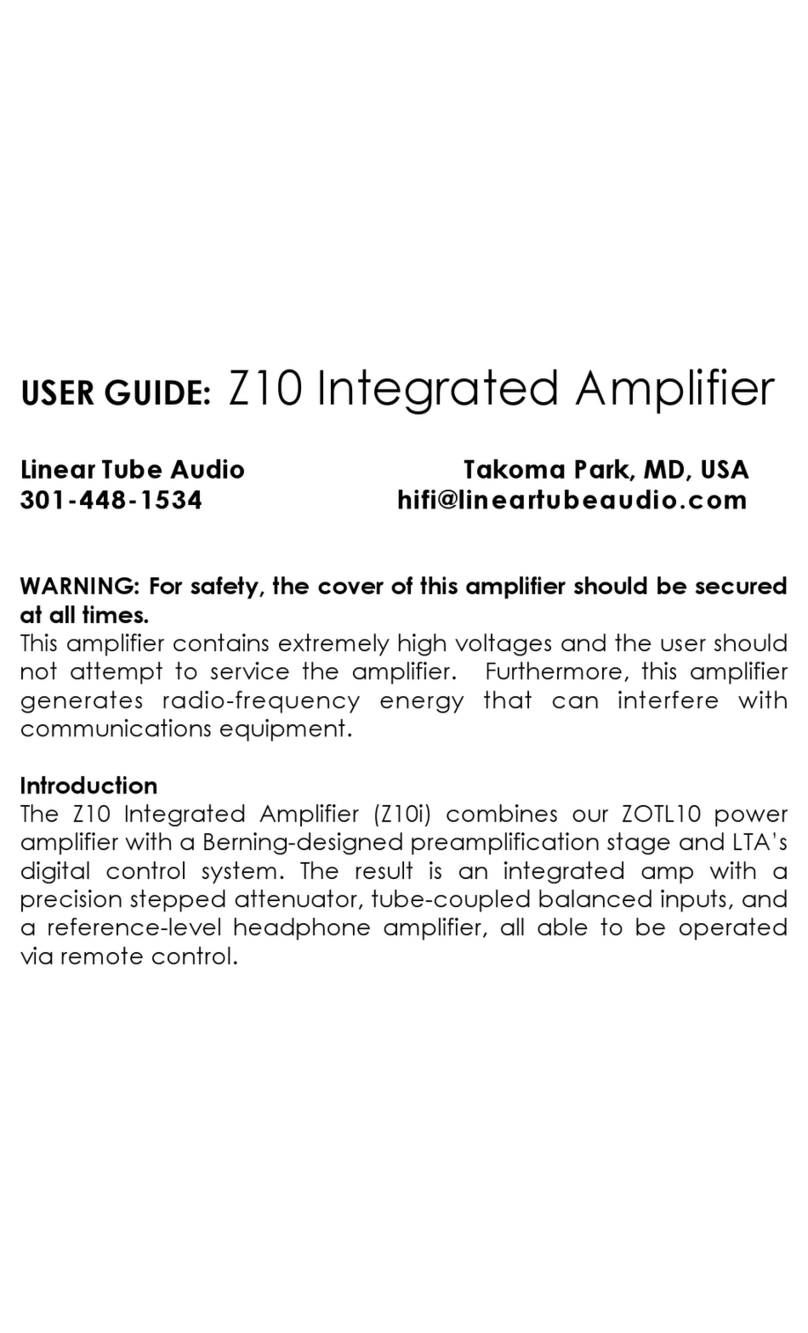
Linear Tube Audio
Linear Tube Audio Z10 Series User manual
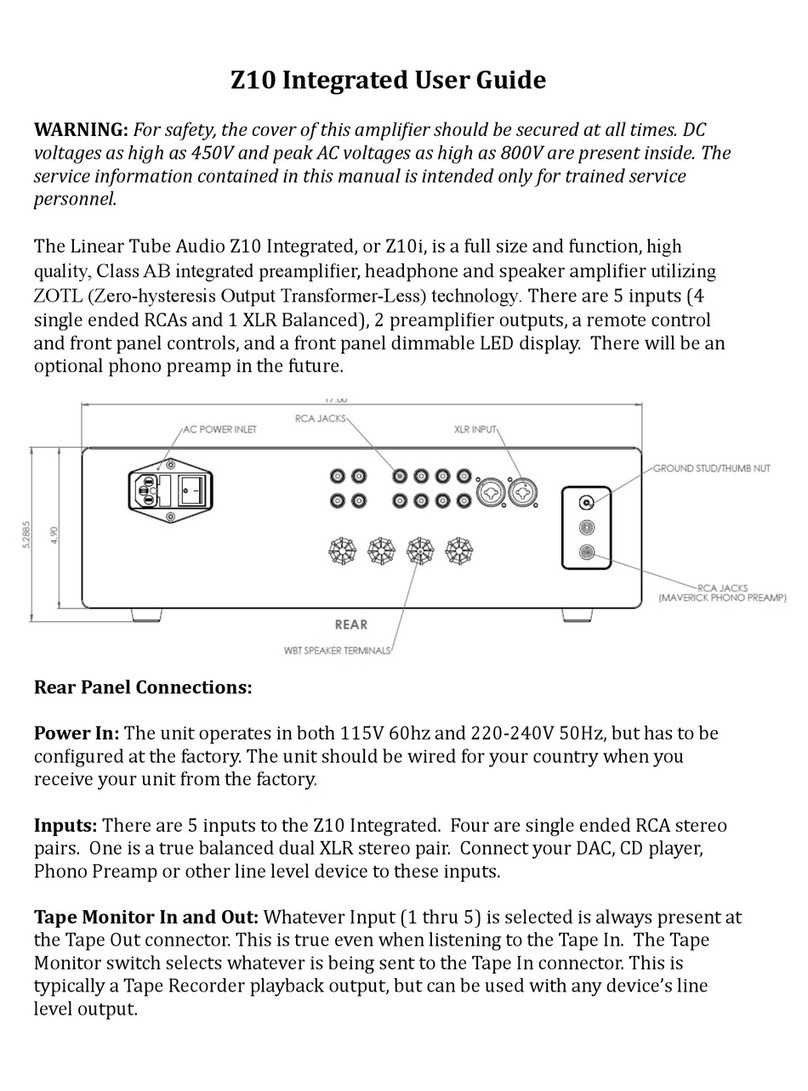
Linear Tube Audio
Linear Tube Audio Z10 Seriers User manual

Linear Tube Audio
Linear Tube Audio ZOTL40 Reference User manual
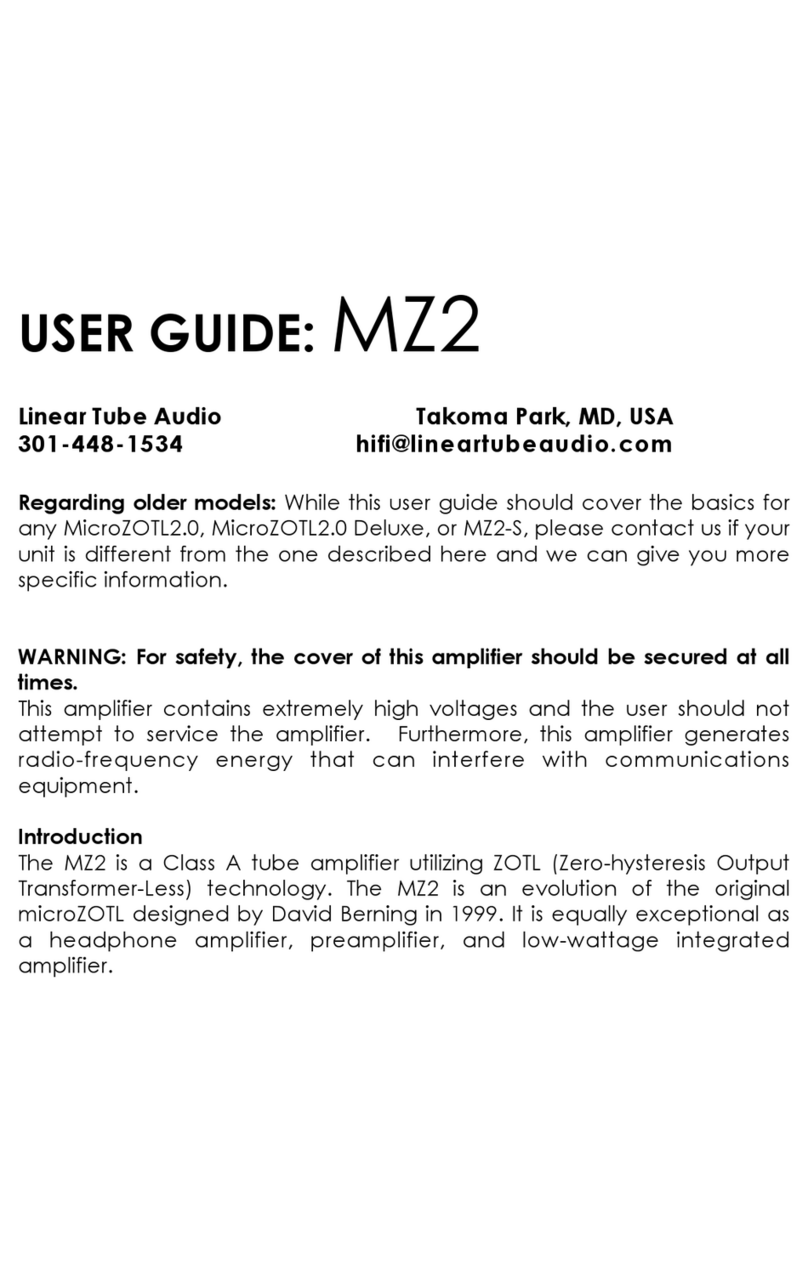
Linear Tube Audio
Linear Tube Audio MZ2 Series User manual
